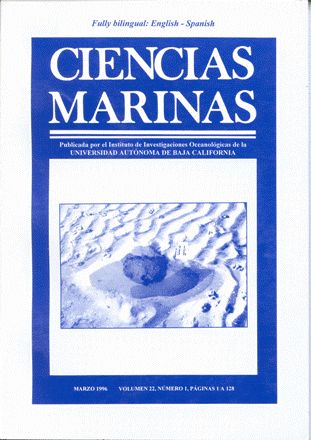Bioturbation rates in Bahía la Choya, Sonora, Mexico
Main Article Content
Abstract
Experimental determination of sediment reworking rates in a subtropical intertidal flat environment yielded information about the amount, nature and implications of sediment reworking in nearshore deposits. Callianassid shrimp in Bahía La Choya, Sonora, Mexico, overturn the sediment in the inner flats at an average rate of 0.56 m3/m2/year. Elasmobranch rays overturn the sediment in the midflats at an average rate of 1.01 m3/m2/year. Resin castings indicate that the shrimp are capable of burrowing to a depth of at least 1.15 m and, where present, can completely rework this interval in Bahía La Choya in two years. The rays reach a maximum observed burrowing depth of 20 cm and, where present, can completely rework this interval in Bahía La Choya in 72 days. Reworking rates are high enough to preclude the preservation of most physical sedimentary structures under normal conditions. Only large-scale sedimentary structures or those buried deeply and rapidly are likely to escape reworking. Rates of biogenic sedimentation by callianassid shrimp are high enough to generate subsurface shell beds. Short-term biogenic sedimentation rates are higher than long-term rates, indicating that such intertidal sediments are not only thoroughly reworked, but are incomplete at time scales of weeks to months.
Downloads
Article Details
This is an open access article distributed under a Creative Commons Attribution 4.0 License, which allows you to share and adapt the work, as long as you give appropriate credit to the original author(s) and the source, provide a link to the Creative Commons license, and indicate if changes were made. Figures, tables and other elements in the article are included in the article’s CC BY 4.0 license, unless otherwise indicated. The journal title is protected by copyrights and not subject to this license. Full license deed can be viewed here.

